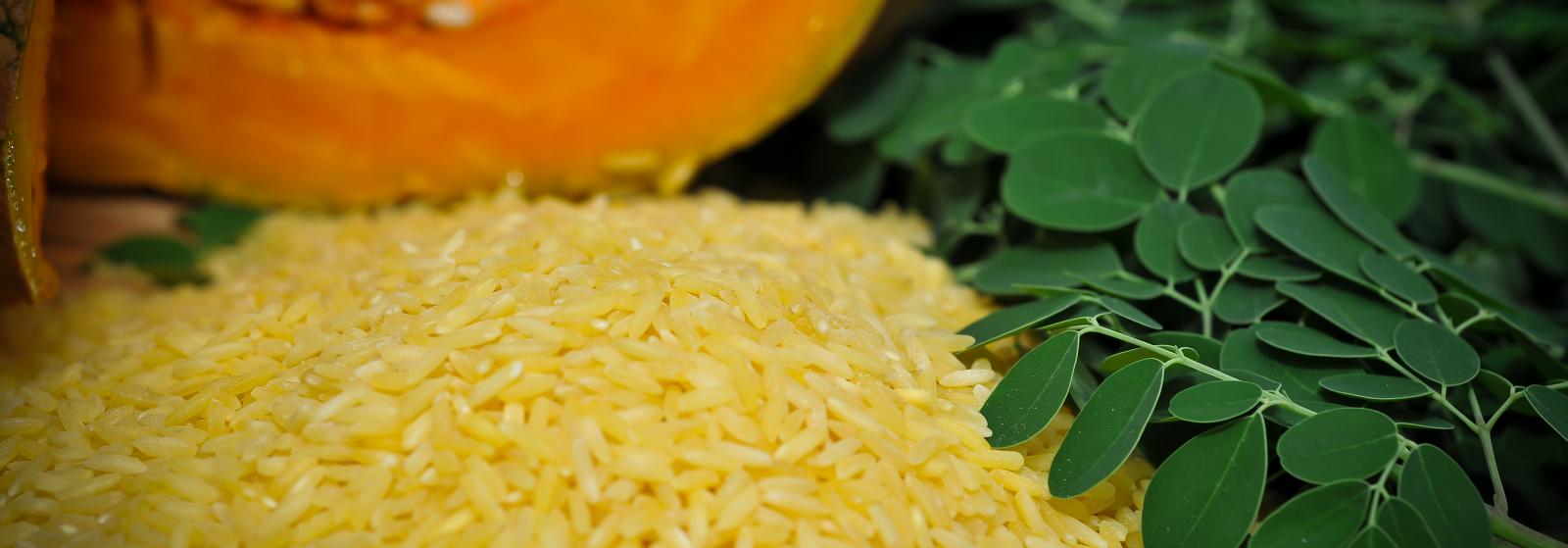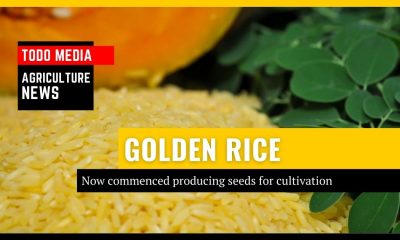Business
Pilipinas, inaprubahan ang GMO “Golden rice” para sa commercial production


Ang Pilipinas ang kauna-unahang bansa na nag-apruba ng commercial production ng genetically modified “golden rice” kun saan umaasa ang mga eksperto na kaya nitong labanan ang childhood blindness at makatulong sa developing world.
Isang biosafety permit ang inisyu ng mga government regulator na nagbigay-daan para sa “golden rice.”
Mayroon itong vitamin A-precursor beta-carotene para mas maging masustansya na itatanim ng mga magsasaka sa buong bansa, ayon sa mga developers.
“It’s a really significant step for our project because it means that we are past this regulatory phase and golden rice will be declared as safe as ordinary rice,” sabi ni Russel Reinke ng Philippine-based International Rice Research Institute (IRRI).
Ang susunod na hakbang ay “take our few kilos of seed and multiply it… so it can be made more widely available,” dagdag pa niya.
Halos dalawang dekada nang nagtratrabaho ang IRRI kasama ang Department of Agriculture-Philippine Rice Research Institute upang madevelop ang golden rice kung saan pinangalan ito dahil sa kanyang bright yellow hue.
Ito ang kauna-unahang genetically modified rice na aprobado para sa commercial propagation sa South at Southeast Asia, sabi ng mga officials nitong Biyernes, July 23.
Ngunit, ang golden rice ay may hinaharap na “strong resistance” mula sa mga environmental groups na tutol sa mga genetically altered food plants. At mayroong ding test fields na inatake ng mga activists.
Sa kabila ng pag-pasa ng huling regulatory hurdle, malayo-layo pang makikita ang “golden rice” sa hapagkainan.
“Limited quantities” ng mga binhi ay pwedeng simulan ibigay sa mga Pilipinong magsasaka sa piling mga probinsya sa sunod na taon, ayon kay Reinke.
Ang ordinaryong bigas, kung saan ito’y kinakain ng milyong mga tao lalo na sa Asia, ay mayroong beta-carotene sa kaniyang halaman, pero hindi ito makikita sa kanilang grain.
“The only change that we’ve made is to produce beta-carotene in the grain,” sabi ni Reinke.
“The farmers will be able to grow them in exactly the same way as ordinary varieties… it doesn’t need additional fertilizer or changes in management and it carries with it the benefit of improved nutrition.”
Ang vitamin A ay importante sa normal growth at development, proper functioning ng immune system, at makakatulong rin ito sa vision.
Ayon sa data ng World Health Organization ang vitamin A deficiency ang dahilan ng hanggang 500,000 cases ng childhood blindness kada taon, at kalahati sa kanila ay namamatay sa loob ng 12 buwan matapos mawalan sila ng kanilang paningin.
Halos 17% ng mga bata sa ilalim ng limang edad sa Pilipinas ay mayroong vitamin A deficiency, ayon sa IRRI.
“We’ve always said we will provide 30-50 percent of that estimated average requirement (of vitamin A), and when you add that to what is existing in the diet you push up a whole cohort of the population from insufficiency to sufficiency,” batay kay Reinke.
Ang “golden rice” ay pinag-aralan ng mga food safety regulators sa Australia, United States at Canada, at binigyan nila ito ng thumbs up, sabi ni Reinke, ngunit hindi pa ito na-aprubahan sa mga sinabing bansa para sa commercial production.
Sinusuri rin ito ng mga regulators sa Bangladesh.
Source: GMANews




